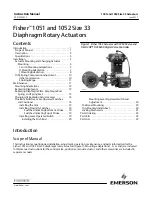
2
49
Before Starting
WARNING!
•
A belt that is buckled up into the
wrong buckle will not protect you
properly. The lap portion of the belt
could ride too high on your body,
possibly causing internal injuries.
Always buckle up your belt into the
corresponding buckle.
•
A belt that is too loose will not
protect you properly. In a sudden
stop, you could move too far
forward, increasing the possibility
of injury. Wear your seat belt
comfortably.
•
A belt that is worn under your arm is
dangerous. Your body could strike
the inside surfaces of the vehicle in
an accident, increasing head and
neck injury. A belt worn under the
arm can also cause internal injuries.
Ribs are not as strong as shoulder
bones. Wear the belt over your
shoulder so that your strongest
bones will take the impact of a
collision.
• The lower part must adhere to the
pelvis rather than the abdomen of
the occupant. To fasten the lap belt
pull slightly up the diagonal portion
of the shoulder belt. To loosen the
lap belt if too tight, tilt the latch
plate and pull on the lap belt. A snug
belt reduces the risk of sliding under
the belt in an accident.
WARNING!
•
A lap belt worn too high can increase
the risk of internal injury in an
accident. The belt forces won't
impact on the strong hip and pelvic
bones, but across your abdomen.
Always wear the lap belt as low as
possible and keep it comfortable.
•
A twisted belt will not protect you
properly. In a collision, it could even
cut into you. Be sure the belt is
straight. If you can't straighten a belt
in your vehicle, take it to a Service
Centre immediately.
•
Do not use devices (clips, fastenings
etc.) that prevent the seat belts from
laying close to the occupants bodies.
•
Do not carry children on a
passenger’s lap using only one seat
belt for protecting both.
• Position the shoulder belt on your
chest so that it is comfortable and
not resting on your neck. The
retractor will withdraw any slack in
the belt.
• To release the belt, push the red
button on the buckle. The belt will
automatically retract to its stowed
position. If necessary, guide the
seat belt with your hand while it
is rewinding, to prevent it from
twisting.
WARNING!
A frayed or torn belt could break in
an accident and leave you with no
protection. Inspect the belt system
periodically, checking for cuts, frays,
or loose parts. Damaged parts must be
replaced immediately.
Do not disassemble or modify the
system. Seat belt/retractor assemblies
must be replaced by the Service
Network after an accident if they have
been damaged (bent retractor, torn
belt, etc.).
Three-Point Seat Belt Height
Adjustment
WARNING!
The seat belts height must only
be adjusted when the vehicle is
stationary.
The vehicle has a shoulder belt height
adjuster for the driver and front
passenger seating positions.
Adjust the guide so that the shoulder
portion of the belt is on the shoulder
and not falling off of it. The belt
Summary of Contents for Levante 2019
Page 1: ...Levante Owner s Manual...
Page 4: ...4...
Page 56: ...2 56 Before Starting...
Page 57: ...2 57 Before Starting...
Page 88: ...3 88 Understanding the Vehicle Interior Components Dashboard Components...
Page 147: ...3 147 Understanding the Vehicle Air Conditioning Distribution A C Dual zone...
Page 148: ...3 148 Understanding the Vehicle A C Four zone...
Page 172: ...4 172 Dashboard Instruments and Controls Diesel...
Page 224: ...4 224 Dashboard Instruments and Controls make phone calls create notes and reminders etc...
Page 348: ...348 Driving...
Page 416: ...416 Maintenance and Care...
















































